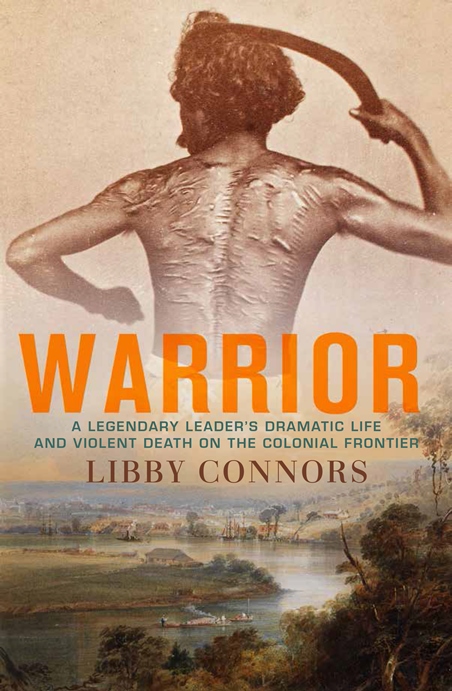
Warrior: Uncovering Brisbane histories
- 1 Dec 2015
At the recent Queensland Literary Awards, Libby Connors received the Queensland Premier’s Award for a Work of State Significance for her book, Warrior: A legendary leader’s dramatic life and violent death on the colonial frontier. Warrior is the story of one of Australia’s little-known heroes, one of many Aboriginal men to die protecting their country. We asked Libby to write about the importance of telling stories of local Aboriginal history and the writing techniques she used to bring the characters to life:
Historians believe that they are writing Australian history but in effect it is white history that is being produced. The stories of white Australians are privileged as the national story.
 I was motivated to start researching Dundalli’s life further after reading about his life and tragic death. I sought to understand the emotions that he must have felt when two Aboriginal men he had worked with were killed in police and settler attacks, another was incarcerated and sent a thousand kilometres away and his brother was killed in a police action all between November 1846 and September 1848.
I was motivated to start researching Dundalli’s life further after reading about his life and tragic death. I sought to understand the emotions that he must have felt when two Aboriginal men he had worked with were killed in police and settler attacks, another was incarcerated and sent a thousand kilometres away and his brother was killed in a police action all between November 1846 and September 1848.
We have several very moving accounts of how the European victims of Indigenous attacks in the Moreton Bay district felt. Those who survived told their stories in court rooms and Missionary Society meetings and sometimes published their accounts too. A later generation re-told them as amazing survival stories in wild locations illustrating the familiar maxim that ‘the victors write history’. My goal was to try to reconstruct the agendas of the traditional owners of southeast Queensland as has been repeatedly done for the settlers.
It is a rare white-created source that provides insight into Aboriginal people’s inner life however. The German explorer Ludwig Leichhardt’s personal diary occasionally provides gems. Dependent as he was upon Aboriginal guides, he occasionally recorded the emotional state of his Aboriginal companions. On 1 January 1844, he recorded a meeting between Nicker, one of his Aboriginal guides, and his wife which ‘seemed very affectionate, although sparing of words. He took his two month son in his arms, regarded him with pleasure and kissed him. He seemed to show him great tenderness.’
I had to cut the original manuscript by 33% to make it acceptable to a publisher and as part of that process they advised me to remove all of the discussion about methodology and the literature review. I also had to take out lots of qualifications within the text that explained how I reached some conclusions and many references that went with them as well. Essentially the advice was that readers want the story not the historical process – save that for academic journals. So, I decided to grab readers with an extraordinary colonial scene at the start so they would keep reading to find the outcome.
The aim was to make historical events more engaging rather than the dispassionate style that I use for history research papers. So I went back and re-read the court papers inserting the details that a contemporary reader needs to imagine a scene. Instead of writing about events in court rooms so that lawyers and historians understood their historical relevance, I realised I needed to point to the drama taking place. These English and Irish barristers were fighting for the lives of Aboriginal men – you can’t get greater court room drama than that. Place an enormously tall and powerfully built man like Dundalli who was scornful of the court and its processes and you increase the drama further. All the data was there – I just had to imagine it based on the historical facts and convey it to the readers.

Libby Connors is a senior lecturer in history at the University of Southern Queensland. She is co-author of Australia’s Frontline and A History of the Australian Environment Movement.
AQ Blog page image: Fight between the Bribie Islanders and the Logan and Stradbroke Island peoples near Greenslopes in December 1853, Illustrated London News, 17 January 1854, p.575

